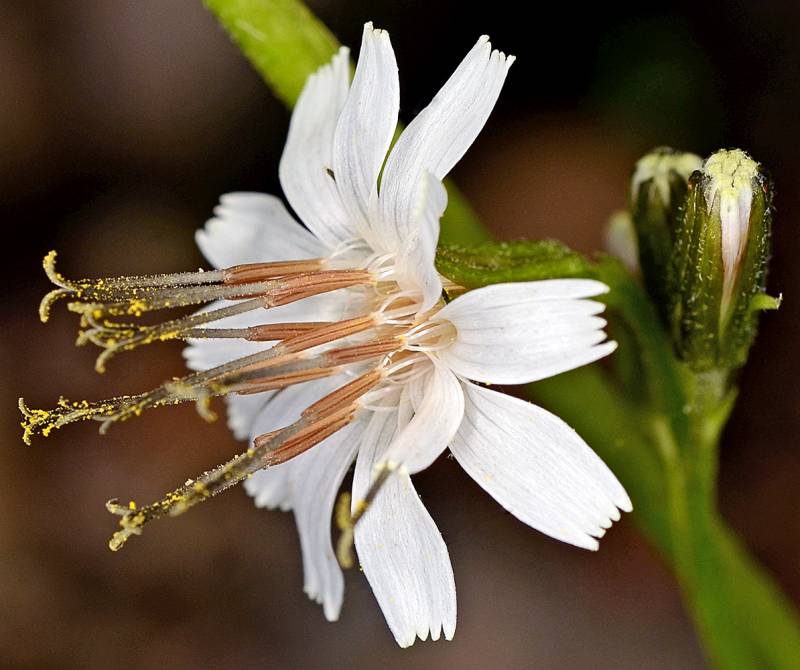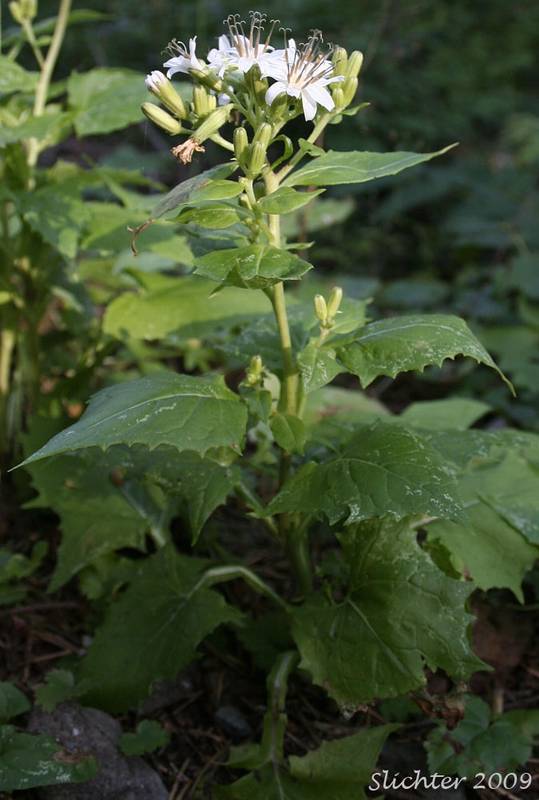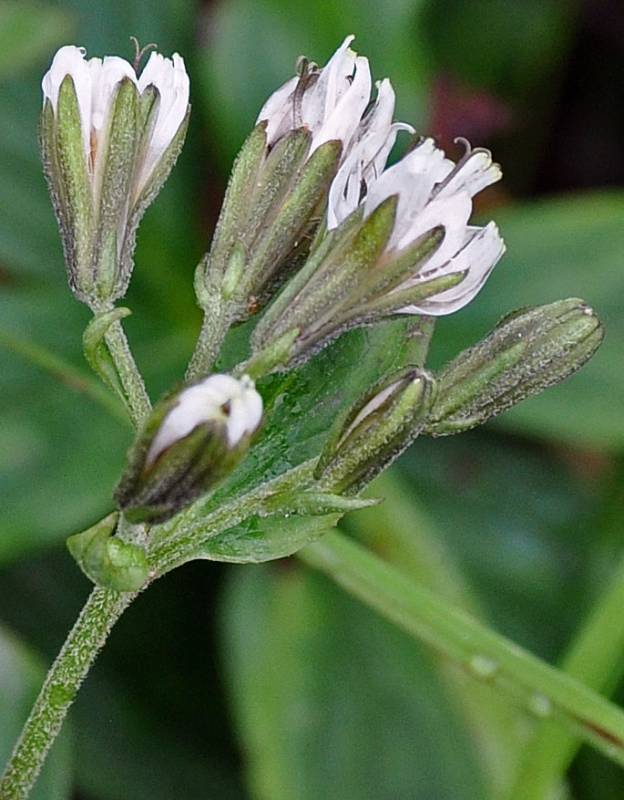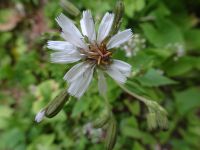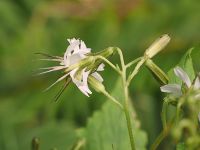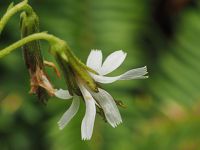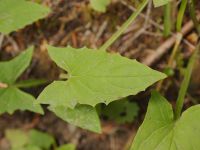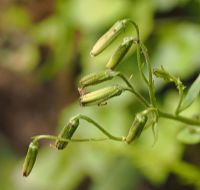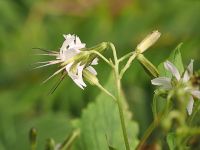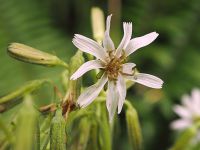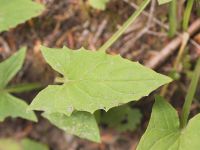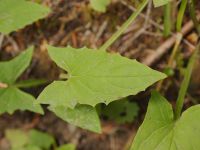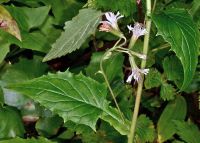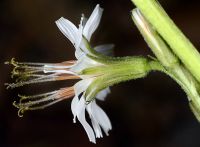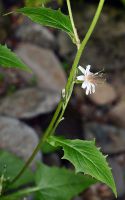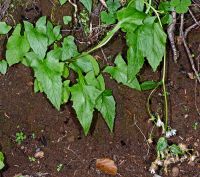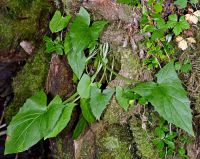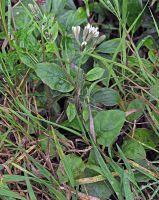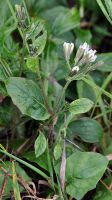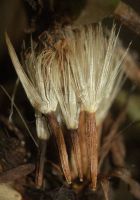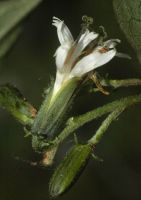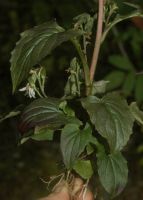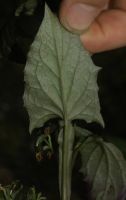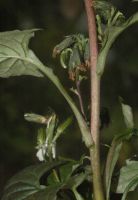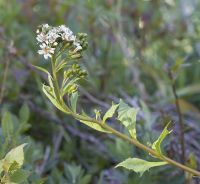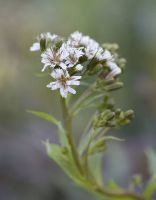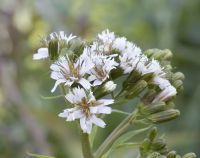Distribution: Occurring west of the Cascades crest and east in the Columbia River Gorge in Washington; Alaska to Oregon, east to Alberta, Idaho, and Montana.
Habitat: Streambanks, forest edge, and moist, shaded places from the lowlands to middle elevations in the mountains.
Flowers: July-September
Origin: Native
Growth Duration: Perennial
Conservation Status: Not of concern
Pollination: Bees, flies, beetles, wasps
Single-stemmed perennial with milky juice, the stem 1.5-8 dm. tall, with fine, woolly hairs in the inflorescence, otherwise glabrous.
Leaves alternate, thin, the lower petiolate, the petiole often wing-margined, the blade deltoid to sagittate, irregularly toothed, up to 12 cm. long and 11 cm. wide; upper leaves reduced and narrower, tapering to a sessile or short-petioled base.
Inflorescence open and flat-topped, with several heads; heads 10- to 15-flowered, the corollas all ligulate, white or purplish; involucre 10-13 mm. high, with about 8 principlal bracts; pappus of numerous, off-white, capillary bristles.
Achenes elongate, cylindrical, glabrous.
Publication: Muhlenbergia 1: 8. 1900.
Prenanthes alata (Hook.) D. Dietr.
Prenanthes lessingii Hultén
Sonchus hastatus Less.
PNW Herbaria: Specimen records of Nabalus hastatus in the Consortium of Pacific Northwest Herbaria database
WA Flora Checklist: Nabalus hastatus checklist entry
OregonFlora: Nabalus hastatus information
E-Flora BC: Nabalus hastatus atlas page
CalPhotos: Nabalus hastatus photos

